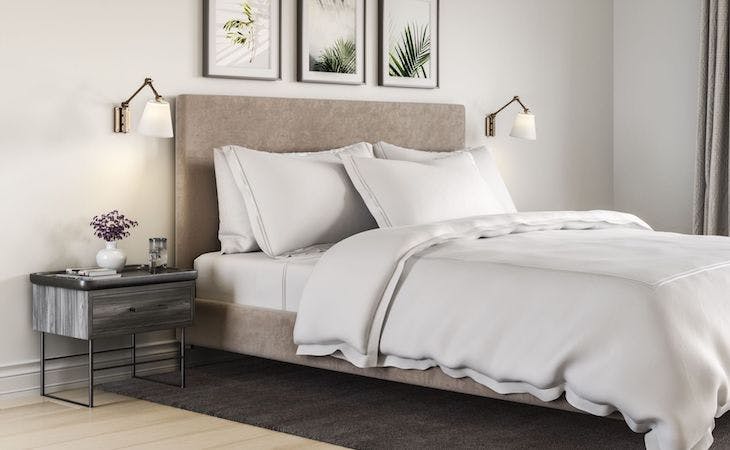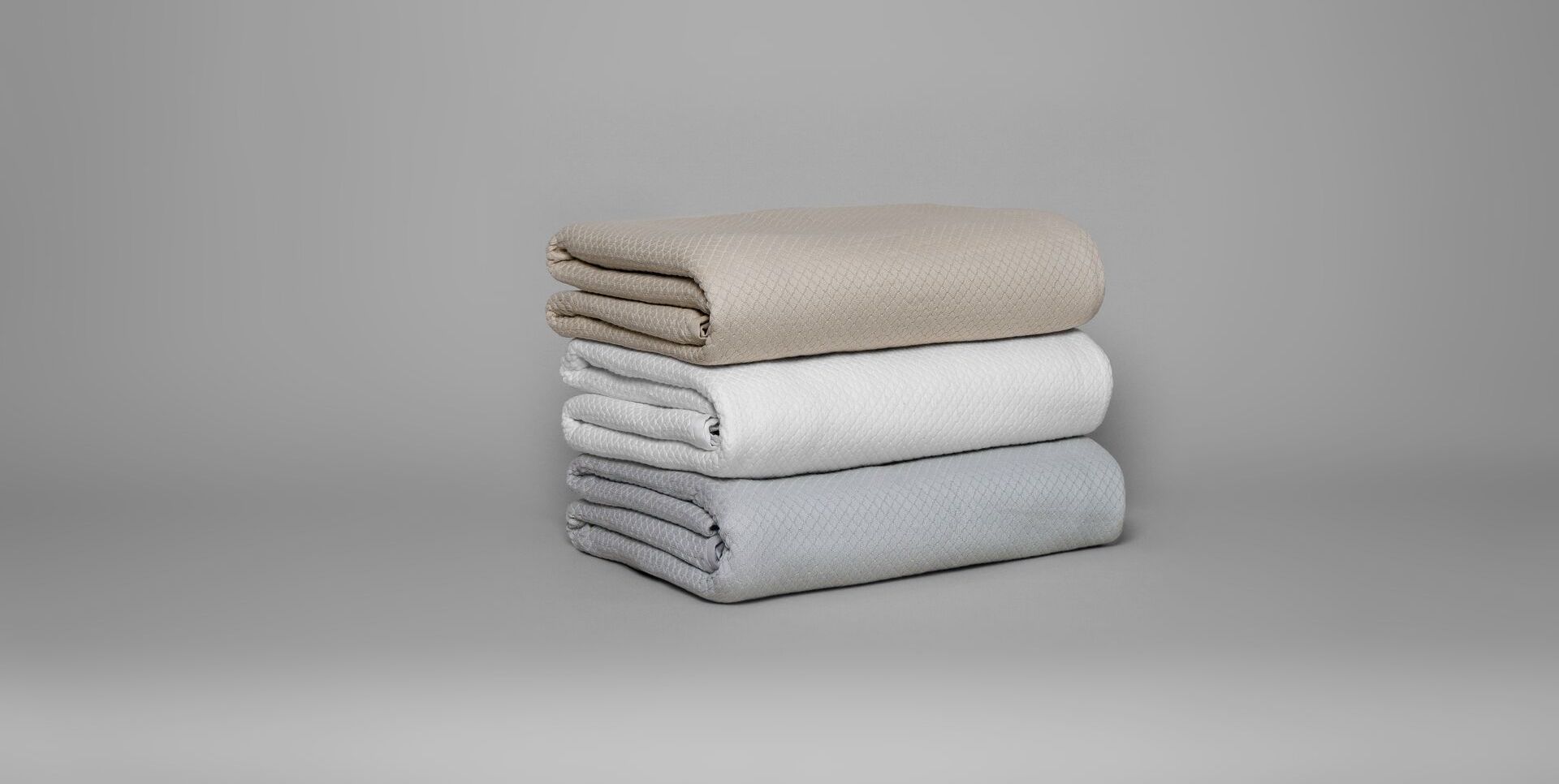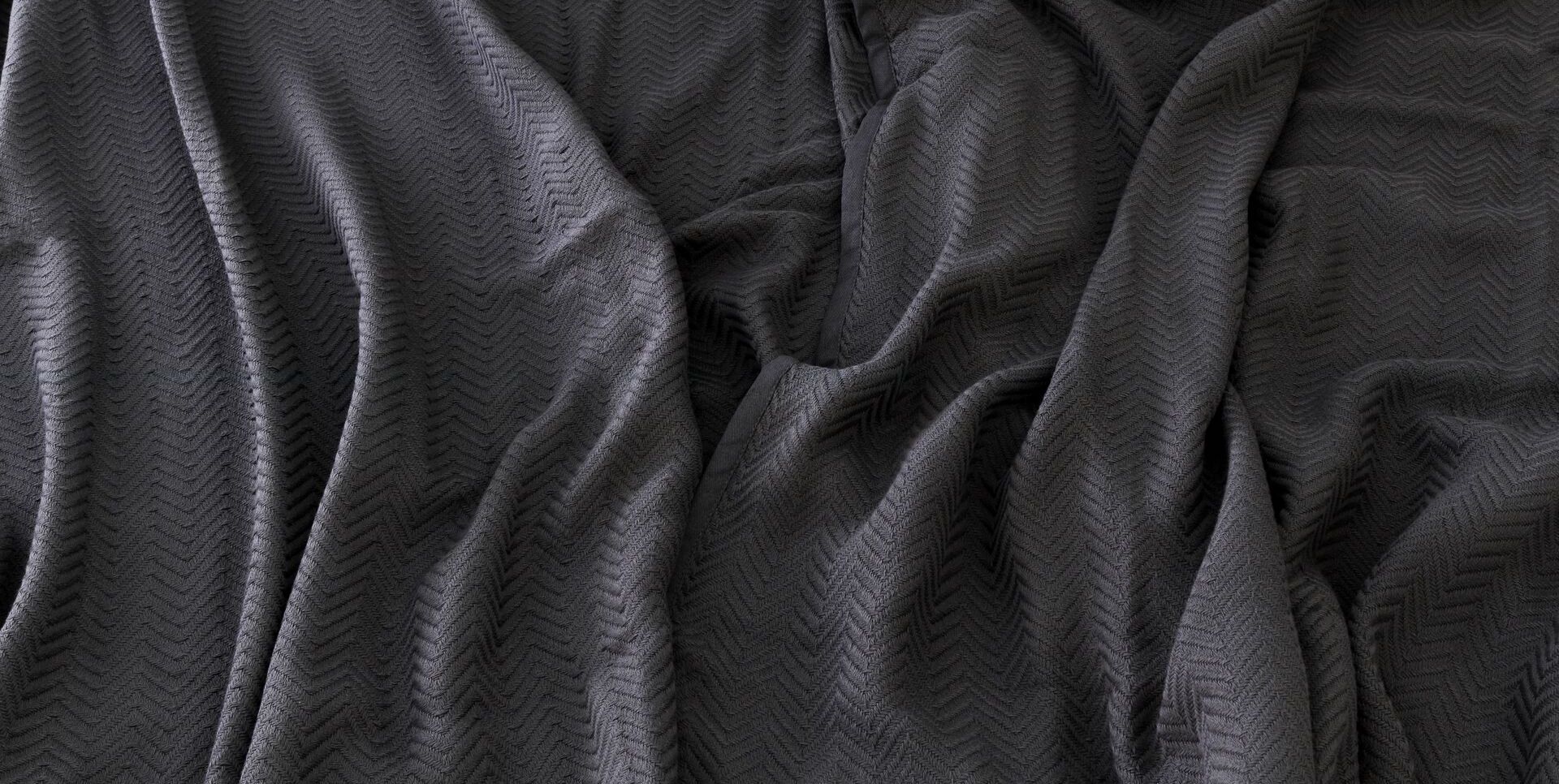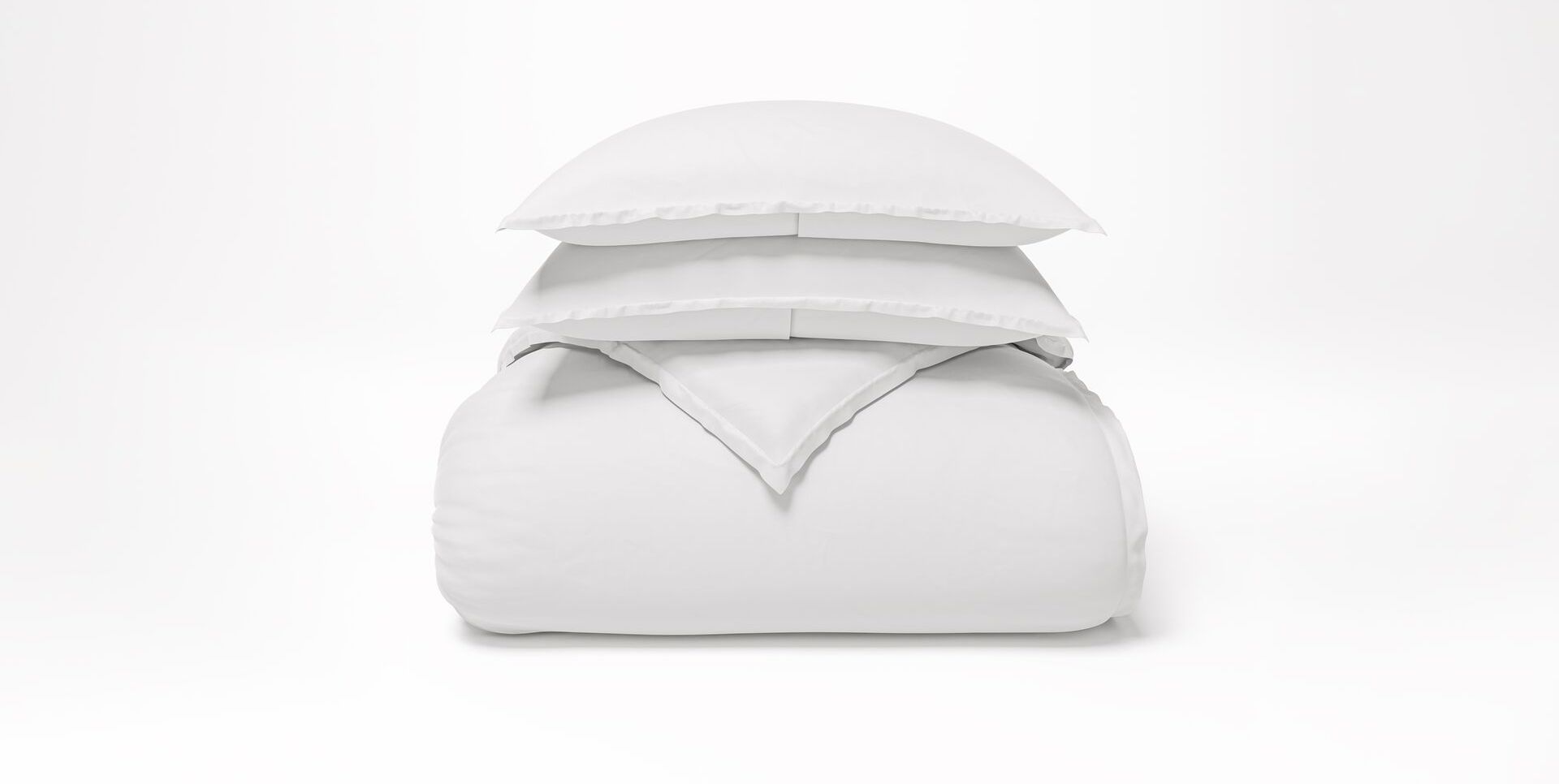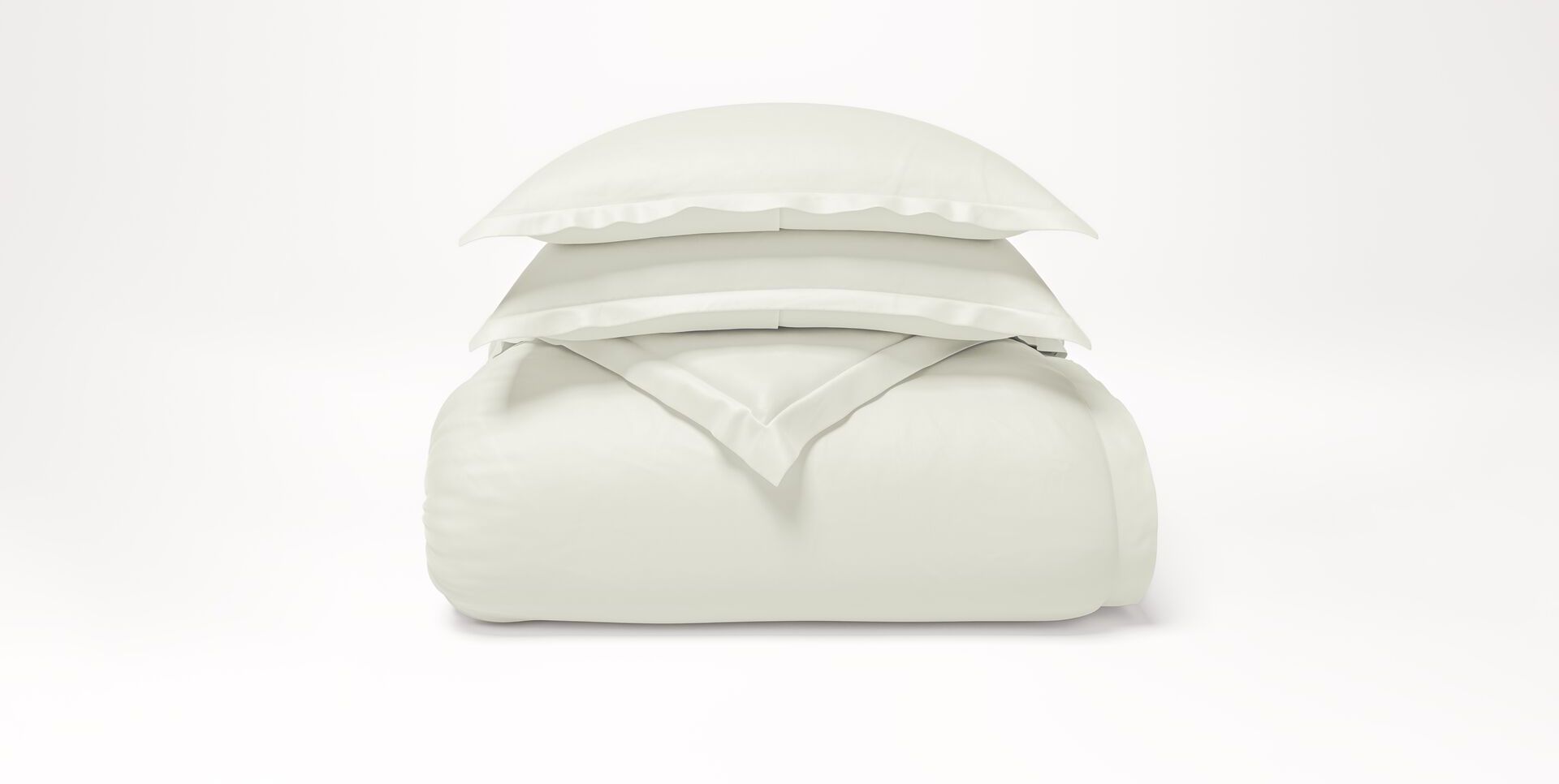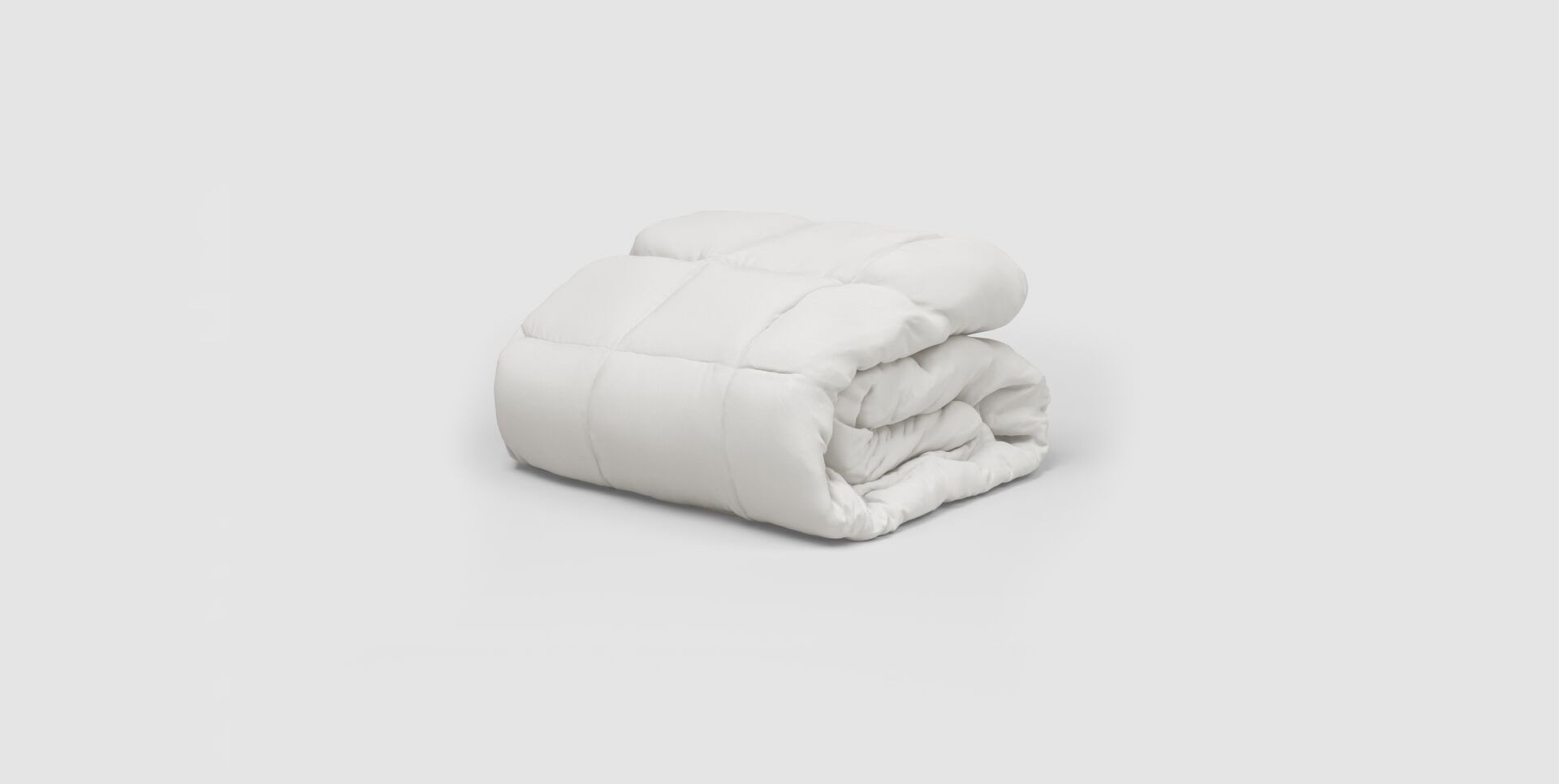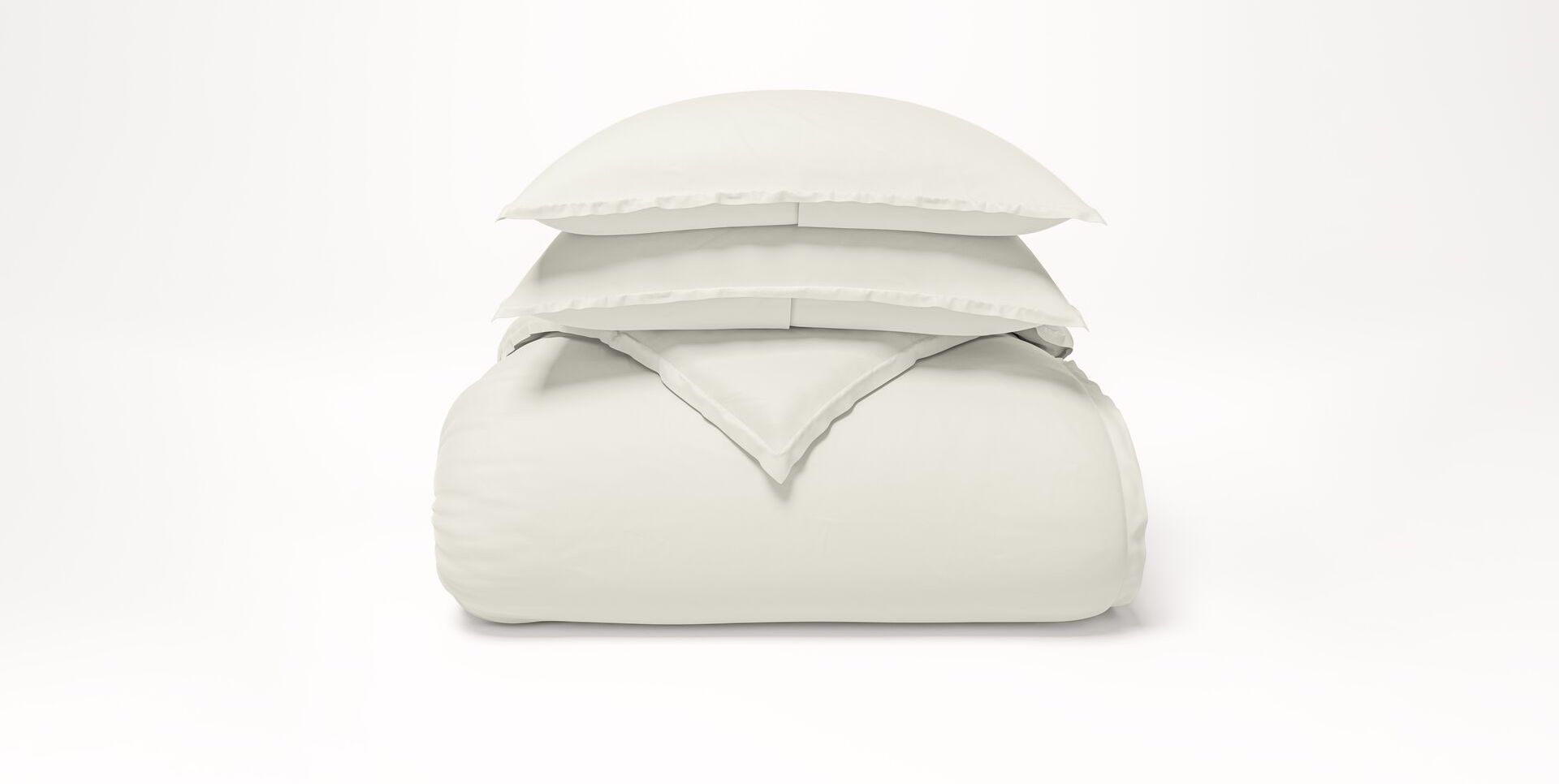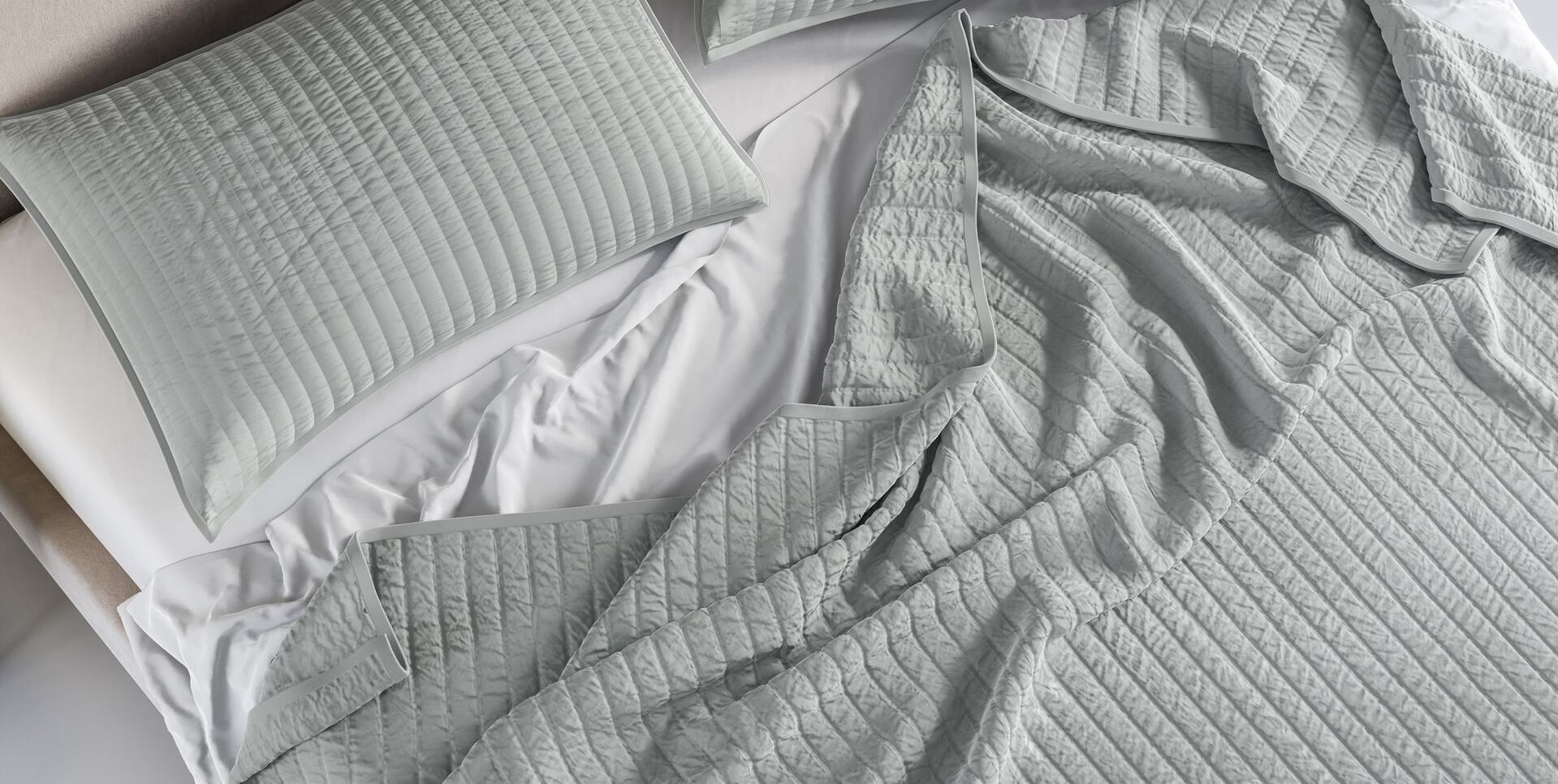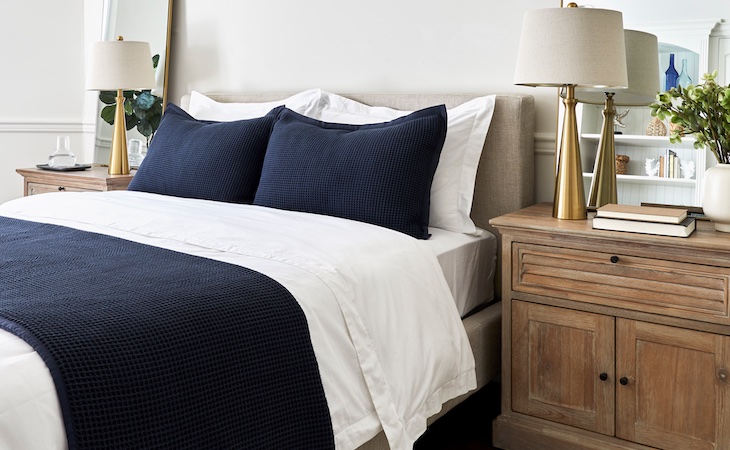Is there anything better than cozying up under a warm blanket on a cold winter’s night? We don’t think so. The only problem is, with so many different types of blankets to choose from, how do you know which is the best blanket for you?
There are pros and cons to each type of blanket. The right blanket for you will ultimately depend on factors like the climate you live in, any health issues, your personal preferences, and your lifestyle. Read on to learn about the differences between various types of blankets and what you can expect from each one.
Common types of blankets
Not all blankets are created equal, and some will suit you more than others. Comforters, duvets, quilts, and weighted blankets are among the most common choices you’ll encounter. Each comes with its benefits and drawbacks.
Weighted blankets
Weighted blankets are comforters that are filled with something heavy (sometimes in addition to the softer fillings) for added weight. The heavier fillings can be plastic pellets, glass beads, or grains of rice. The weight of these blankets can range from five to 30 pounds.
The heft of the blanket has a soothing and calming effect, similar to being hugged, a phenomenon known as deep pressure stimulation.” Weighted blankets have been shown to help children on the autism spectrum and adults with anxiety relax and sleep better.
Comforters
The comforter, also called a bedspread or bed cover, is probably the most popular type of blanket in North America.
It’s a thick blanket filled with synthetic fibers or down (or, less commonly, with wool or cotton) and quilted to make sure the filling is evenly distributed throughout the blanket. Comforters come in a wide variety of colors and patterns that you can choose to match your room decor.
Duvet covers
Duvets, also called coverlets, are similar to comforters (and are sometimes called comforters) in that they are thick blankets filled with fluffy material and quilted to distribute the filling.
Like a comforter, a duvet can be filled with synthetic fibers, down, feathers, or wool. The main difference between the two is that a comforter is a patterned blanket that’s meant to be seen, while a duvet is plain white and goes inside a duvet cover to protect it. The advantage with duvets is that you get to change your room decor whenever you put a new cover.
Also, you don’t have to wash a duvet as often as a comforter, because you can wash the cover regularly. On the other hand, some people hate dealing with duvet covers and prefer throwing their machine-washable comforter in the wash with the rest of their bedding.
Related: An expert guide to cleaning every type of bedding
Quilts
A quilt is a thin quilted blanket composed of three layers. The top layer is a collection of different pieces of fabric stitched together to create an artistic pattern. The second, inner layer (batting) is a thin layer of wool or down, and the bottom layer is a single sheet of fabric.
Traditionally, quilting was a skilled craft done entirely by hand. Today quilts are typically machine sewn, with the pattern sometimes printed onto the fabric. Most often made of cotton or cotton blends, quilts are lightweight and so better suited for summer months or places with very mild winters.
Electric blankets
Electric blankets look just like regular blankets, except they use electricity to warm up even more. They usually need to be plugged into an outlet and typically heat from the inside out.
Electric blankets are great for especially cold climates. There is a fire hazard element with electric blankets, however, so be sure that there’s no obvious damage to the wiring before use.
Throw blankets
Finally, a throw blanket (sometimes simply referred to as “blanket”) is made of a single sheet of fabric, such as fleece, flannel, wool, or polyester. Several types of blankets fit into this category—chenille blankets, knit blankets, afghan blankets, sherpa blankets, and more.
Throw blankets are versatile, easy to clean, and perfect for both snuggling up on the sofa and cozying up to sleep. They can be used on their own, but if you live in a colder climate or want something bulkier, they’re best used in combination with other types of blankets for added warmth and coziness. (Check out our guide to blanket sizes to find your perfect match.)
Related: What you need to know before buying new sheets
Different types of blanket materials
Different materials have different benefits. We break down the most common blanket materials below.
Natural materials
From cotton to down to wool, there are plenty of natural materials to choose from, each with different pros and cons.
Cotton blankets
Cotton fabric is a very popular choice. It’s known for being extremely wearable and breathable, but in a cold winter climate, it won’t be able to keep you warm. Unlike wool fibers and down clusters, which trap air and body heat to keep you warm (but not sweaty), cotton doesn’t have the same insulating ability.
This means, however, that cotton’s breathability is unbeatable for the summer months when you don’t want to raise your body temperature but need at least one layer of fabric over you to get to sleep.
Down blankets
Down is the protective undercoat of ducks and geese and has fantastic insulating properties. When choosing a down fill duvet or comforter, pay attention to fill power. Technically, fill power refers to the number of cubic inches that the down occupies.
The bigger the down clusters, the higher the fill power without any added weight. A good quality down comforter will have a fill power of 500 or more. A fill of 500 to 550 will be enough if you live in a climate where temperatures don’t drop below freezing. Those facing a very cold winter will be better off with a fill power of 600 or more.
Wool blankets
Wool will keep you warm both as a filling of a comforter and as a throw blanket. Wool is naturally hypoallergenic and has fantastic moisture-wicking properties, meaning you won’t get sweaty.
Wool blankets and comforters, however, can be harder to care for as most can’t be put in the washing machine. If ease of care is an issue for you, go with a different material.
Synthetic materials
Synthetic fabrics are a good alternative to natural fibers, especially for people with allergies or those on a budget.
That being said, don’t go with the cheapest options as they’ll lump faster and won’t keep you as warm. Gel fibers, for example, are a type of man-made fiber that resemble the properties of down better than others.
Fleece blankets
Similar to wool, fleece blankets are warm and moisture-wicking, though a bit more lightweight.
Fleece blankets are soft to touch and cuddly. Although as a man-made material fleece is not naturally breathable, some fleece blankets have been engineered to wick moisture away from your body. Go with a high-quality fleece to get the best performance.
Acrylic blankets
Another great alternative to wool, acrylic is very easy to care for, machine washable, and resistant to moths and other pests. Acrylic blankets are also much softer than wool blankets and tend to be the softest blankets you can buy.
Acrylic is a lightweight, relatively inexpensive way to keep you warm during the winter months.
Polyester blankets
While polyester blankets are an inexpensive way to keep you warm, this material is tough on sensitive skin. And because polyester isn’t moisture-wicking, it can be especially bad for people with skin issues like eczema.
Rayon blankets
Rayon is derived from natural fibers, like trees and bamboo, and as a result is a very light, breathable fabric.
That being said, rayon blankets tend to be less durable than blankets made from natural fibers like cotton.
Blanket FAQs
Which type of blanket is warmest? What are thin blankets called? Below, we’re answering the most common questions about blankets.
Which type of blanket is warmest?
Wool. Wool blankets tend to be the warmest blankets on the market. Thicker fleece and cashmere blankets are also very warm.
What are the three types of bedding?
Types of bedding generally include a mattress cover, fitted sheet, flat sheet, blanket, pillowcases, and comforter.
There are many more bed accessories to choose from, including mattress toppers, shams, bed skirts, runners, and more.
What are really thin blankets called?
Quilts. Quilts are generally quite thin, lightweight, and breathable, although there are thicker variations on the market.
Get high-quality new blankets at Saatva
Choose the perfect blanket for you from our wide variety of offerings, from weighted blankets to comforters.

Weighted Blanket
Cotton velvet is soft to the touch for maximum comfort and warmth. Gentle, even pressure from all-natural glass beads encourages relaxation.
Plush, all-natural weighted blanket for deeper, more restful sleep

Organic Percale Duvet Cover Set
Made from cotton, with a crisp and cool 200 thread count percale weave.
Crisp and cool organic cotton duvet cover and shams
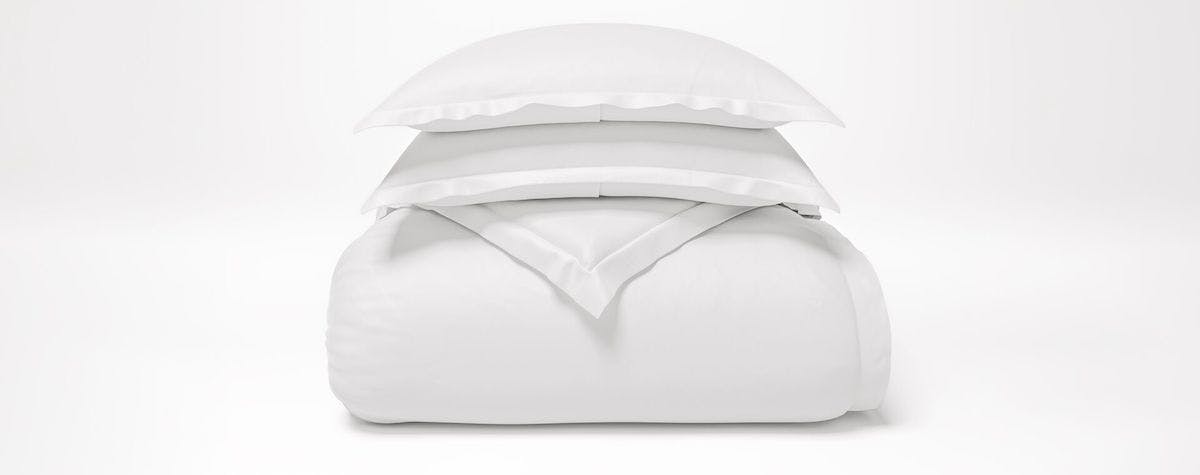
Organic Sateen Duvet Cover Set
Made from cotton, with a silky-soft 300 thread count sateen weave.
Silky-soft cotton duvet cover and shams
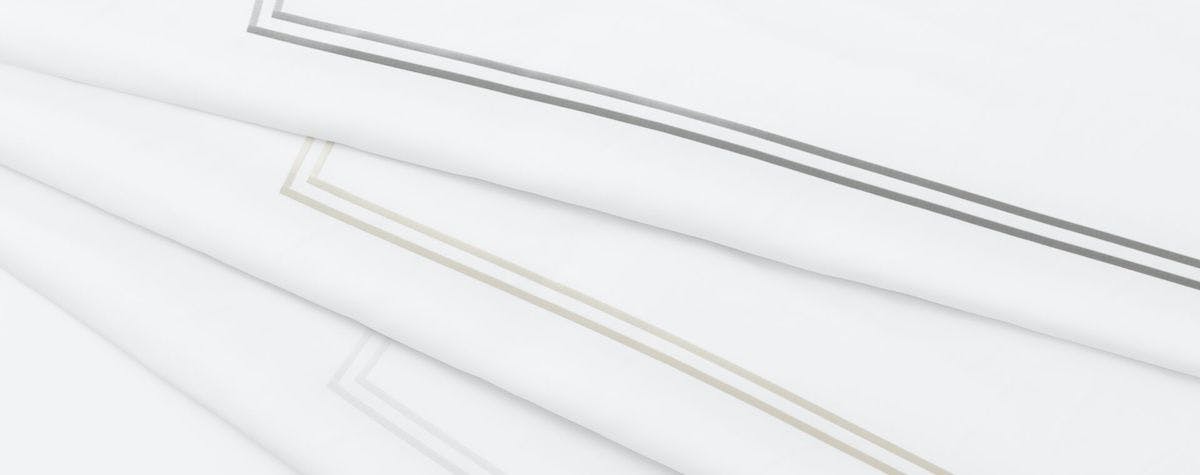
Embroidered Sateen Duvet Cover Set
Silky-soft 300 thread count that gets softer with every wash. Hand-finished embroidered trim.
Silky-soft cotton duvet cover and shams with elegant detailing
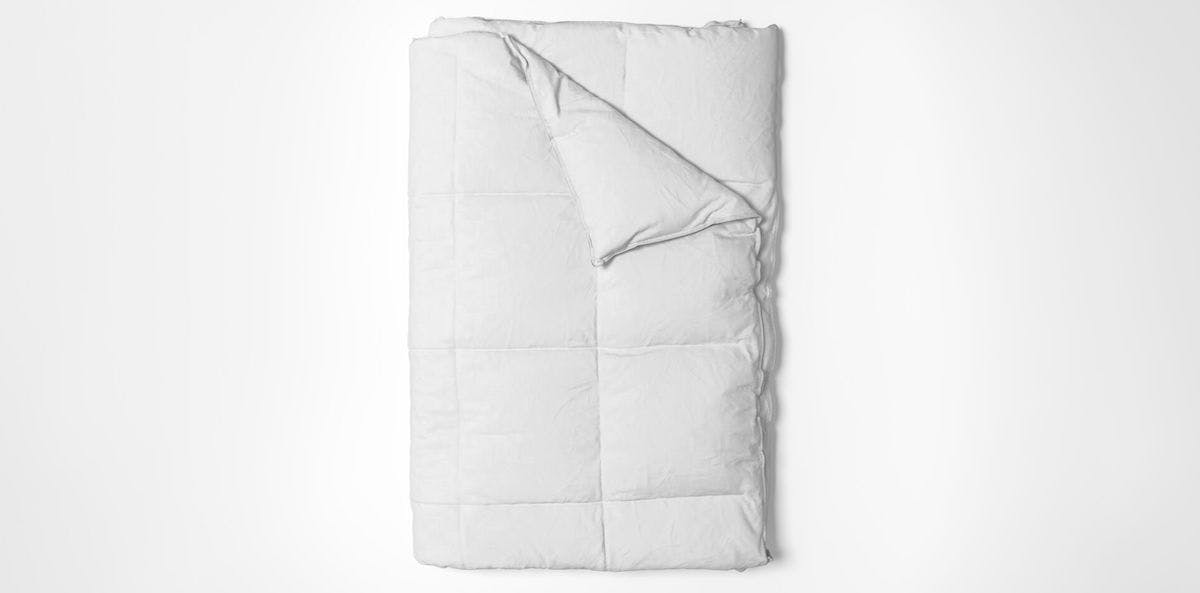
All-Year Down Alternative Comforter
Made from cotton in a 200 thread count percale weave with a unique blend of 3D down alternative and sustainable lyocell fill.
Plush and breathable all-season comforter/duvet insert
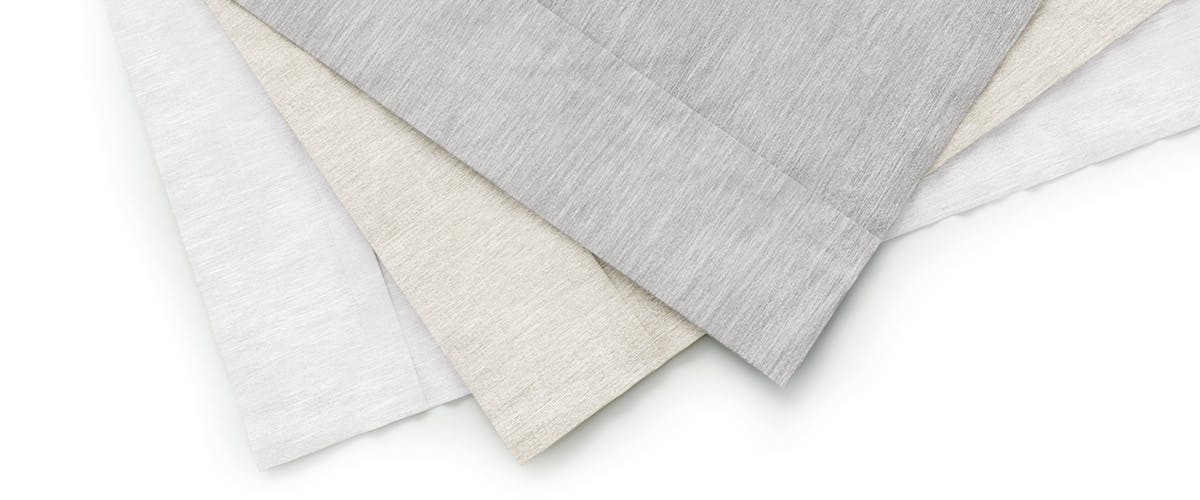
Linen Duvet Cover Set
Made with responsibly-sourced, all-natural Belgian linen that gets softer with every wash.
Airy and elegant duvet cover and shams with a relaxed look
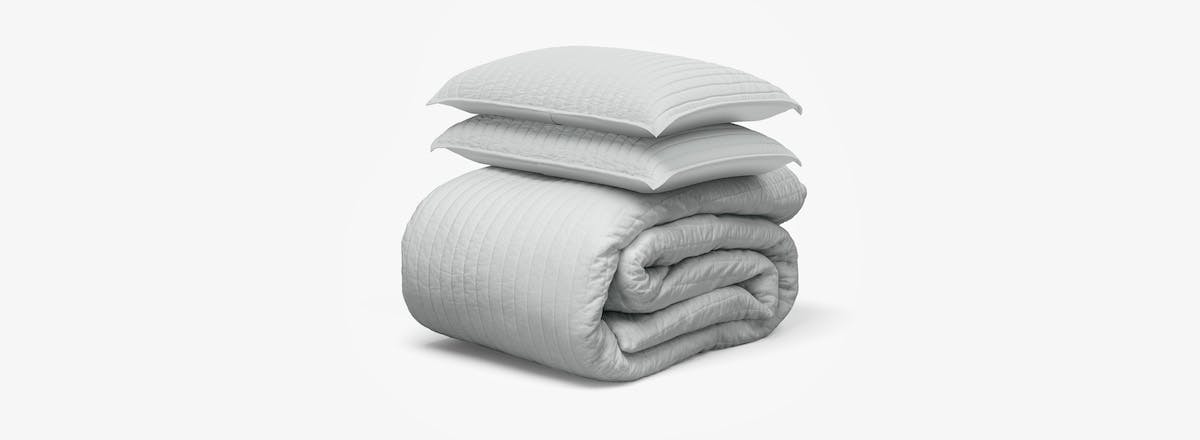
Organic Cotton Channel Quilt
All-season quilt made with a 300 thread count sateen. Designed to layer in colder months but is light and breathable on its own for warmer months.
A silky-soft, lightweight quilt with a relaxed yet refined lived-in look





